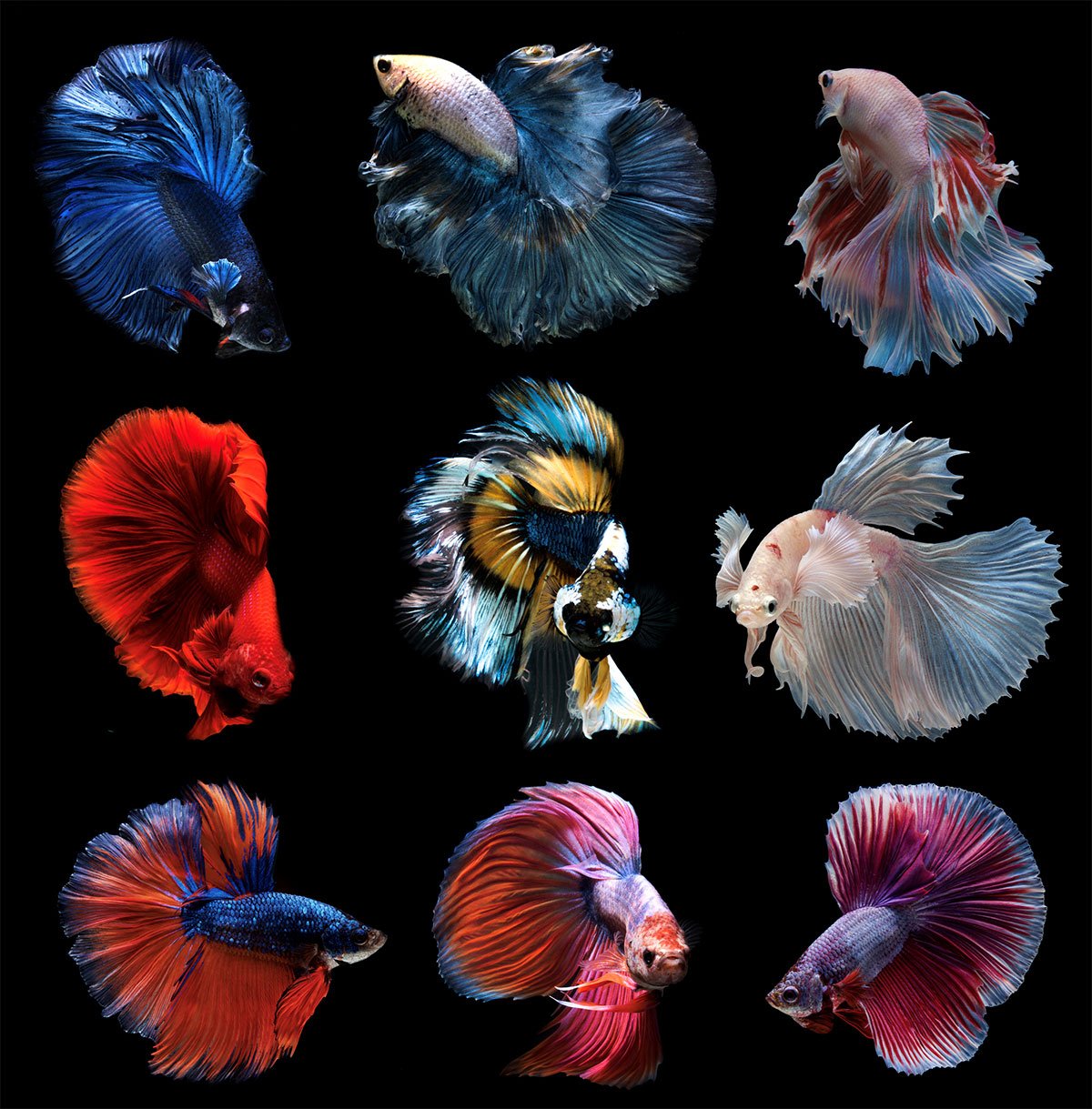Siamese Fighting Fish - A living work of art
Welcome to the captivating realm of Siamese Fighting Fish, where beauty meets strength in a stunning display of aquatic elegance. Also known as “Betta fish”, these vibrant creatures have enchanted aquarium enthusiasts for centuries with their vibrant colors, flowing fins, and intriguing behaviors.
The Origin and History of Siamese Fighting Fish
Siamese Fighting Fish (Betta splendens) is a freshwater fish native to Southeast Asia, particularly in Thailand (formerly Siam), Cambodia, Laos, and Vietnam. Originally, these fish were selectively bred for their aggressiveness and vibrant colors, a practice that ultimately led to the creation of the Betta we know today. Siamese Fighting Fish were first introduced to the Western world in the mid-19th century, gaining popularity for their remarkable beauty and unique characteristics.
A Riot of Colors and Fins
One of the most striking features of Siamese Fighting Fish is their vivid coloration and intricate fin designs. From brilliant blues and fiery reds to subtle pastels and metallic hues, these fish come in an array of colors that can rival any artist's palette. The fins of Betta fish are equally impressive, often boasting long, flowing tails that add to their regal appearance. The combination of colors and fin structures makes Siamese Fighting Fish a living work of art, a true marvel to behold.
A Unique Aquarium Habitat
Siamese Fighting Fish generally inhabit shallow bodies of water with abundant vegetation. Bettas prefer warm water (around 78-80°F or 25-27°C) and enjoy hiding spots, such as plants, to retreat to when needed. Wild bettas prefer to live in bodies of water teeming with aquatic vegetation and surface foliage, such as fallen leaves and water lilies. The abundance of plants provides security from predators and a buffer between aggressive males, who coexist by claiming dense sections of plants as territory. Such vegetation also offers protection to females during spawning and to fry during their earliest and most vulnerable stages.
DIET
Betta splendens is naturally carnivorous, feeding on zooplankton, small crustaceans, and the larvae of aquatic insects such as mosquitoes, as well as insects that have fallen into the water and algae.[29] Contrary to some marketing materials in the pet trade, bettas cannot subsist solely on vegetation or the roots of plants.[30] Bettas can be fed a varied diet of pellets, flakes, or frozen foods like brine shrimp, bloodworms, daphnia and many others. Due to their short digestive tracts—a characteristic of most carnivores—bettas have difficulty processing carbohydrates such as corn and wheat, which are commonly used as fillers in many commercial fish foods.[31] Thus, regardless of the source, a proper betta diet should consist mostly of animal protein.
The Agonistic Nature of Bettas
As their name suggests, Siamese Fighting Fish are known for their aggressive tendencies, particularly the males. In the wild, male Bettas engage in territorial disputes to establish dominance and attract mates. While keeping multiple males together can lead to aggression, female Bettas can coexist peacefully, making them an excellent choice for community aquariums. The display of flaring gills and extended fins during courtship or territorial disputes is a fascinating aspect of their behavior.
Learn more:


